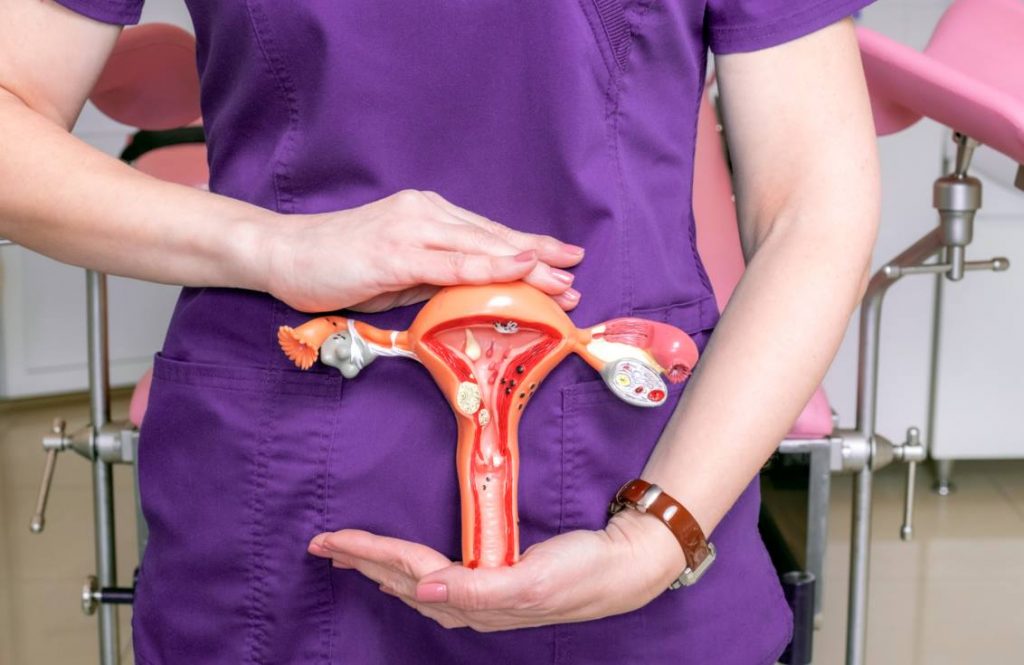
When it comes to ovarian cancer, early detection is a lifesaver. Diagnosis and treatment before it spreads beyond the ovaries can drastically increase the survival chance rate. Unfortunately, the early symptoms of this disease often go unnoticed or mistakenly attributed to other conditions. Acknowledging the hidden signs is essential for getting the best outcome in the ovarian cancer journey.
The American Cancer Society estimates the 5-year survival rate for early-stage ovarian cancer at around 90%. The bad news is that 80% of patients with this cancer receive the diagnosis in later stages due to their inconspicuous early symptoms.
The following symptoms might be linked to less severe health issues, but getting tested for ovarian cancer is the safest option. Without further ado, let’s look into the four most commonly overlooked signs of this cancer.
Bloating is a symptom we all experience from time to time, particularly during or before our period. However, feeling consistently bloated for up to three weeks may be a legitimate cause for concern. In this case, it is wise to consult a specialist to rule out the possibility of ovarian cancer, especially if you are over 50 or have a family history of this disease.
We typically deal with pain in the pelvis, abdomen, and lower back area while menstruating. When the pain doesn’t go away for days after you are done menstruating, this could be a red flag for ovarian cancer. Tracking these symptoms is especially important because discomfort in this area is often brushed away as menstrual or premenstrual cramps.
If you have recently noticed an unusual loss of appetite or feeling of fullness lasting more than three weeks, you should talk to your doctor. These signs, combined with sudden weight loss or weight gain, can indicate early-stage ovarian cancer. Other gastrointestinal issues associated with this disease include excessive burping, heartburn, diarrhea, and constipation.
A frequent and urgent need to use the bathroom, regardless of the amount of liquids you consume, can be a hidden sign of ovarian cancer. In addition to the uncomfortable urgency and frequency, some patients with this disease have reported a burning sensation during urination or a feeling of fullness in the bladder area even after peeing.
Experts and survivors alike have long considered ovarian cancer a silent killer for a reason. However, while the early stages of this disease may be difficult to detect, raising awareness of the telltale signs is crucial in combating ovarian cancer. The symptoms mentioned above should ring the alarm bells about the need to consult a specialist.
Statistics show that ovarian cancer is the most curable in its first stage. The Ovarian Cancer Research Alliance estimates that the survival rate for five years or more after diagnosis of stage 1 ovarian cancer is around 90%, while the five-year survival rate for later stages varies from 20% to 70%.
Ignoring the early signs and attributing them to less serious problems like stress, weight gain, or aging is a problem that makes the cancer journey more difficult for many patients.
Signs of early-stage ovarian cancer can be vague and resemble other health issues, but paying attention to how long they last is key. According to Amina Ahmed, OB-GYN at RUSH University Medical Center, most patients with ovarian cancer get diagnosed after months of dealing with symptoms.
In some cases, ovarian cancer can even go unnoticed for years before the patient receives an accurate diagnosis. In addition to its vague and unnoticeable signs, there is still no effective way to detect ovarian cancer in its earliest stages. The World’s Ovarian Cancer Coalition’s Every Woman Study from 2018 found that 10% of ovarian cancer patients wait more than a year to obtain a diagnosis after their first doctor’s visit about symptoms.
Paying attention to early signs and symptoms of ovarian cancer can improve the chances of getting an early diagnosis and effective treatment. Make sure to consult your doctor if you have dealt with discomfort in the abdominal or pelvic area for over three weeks.